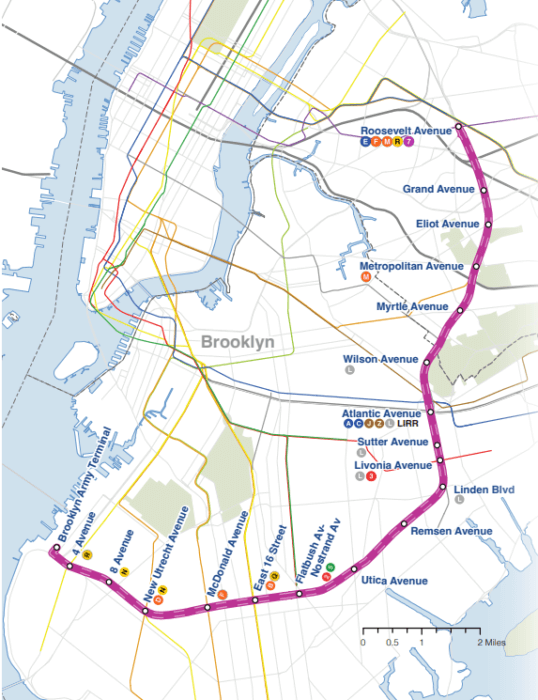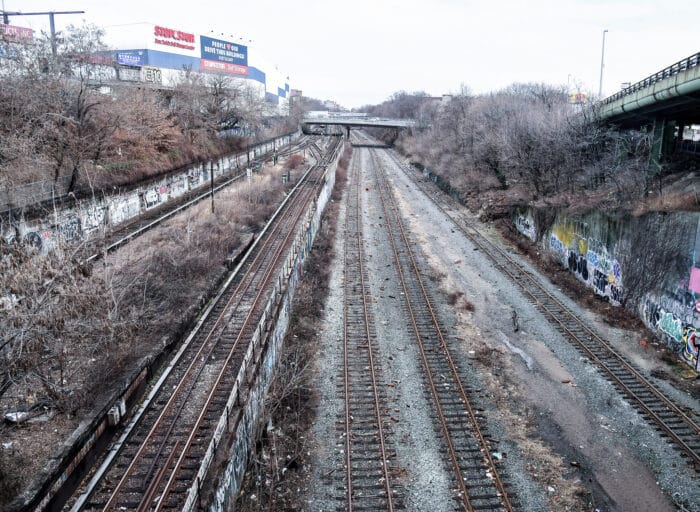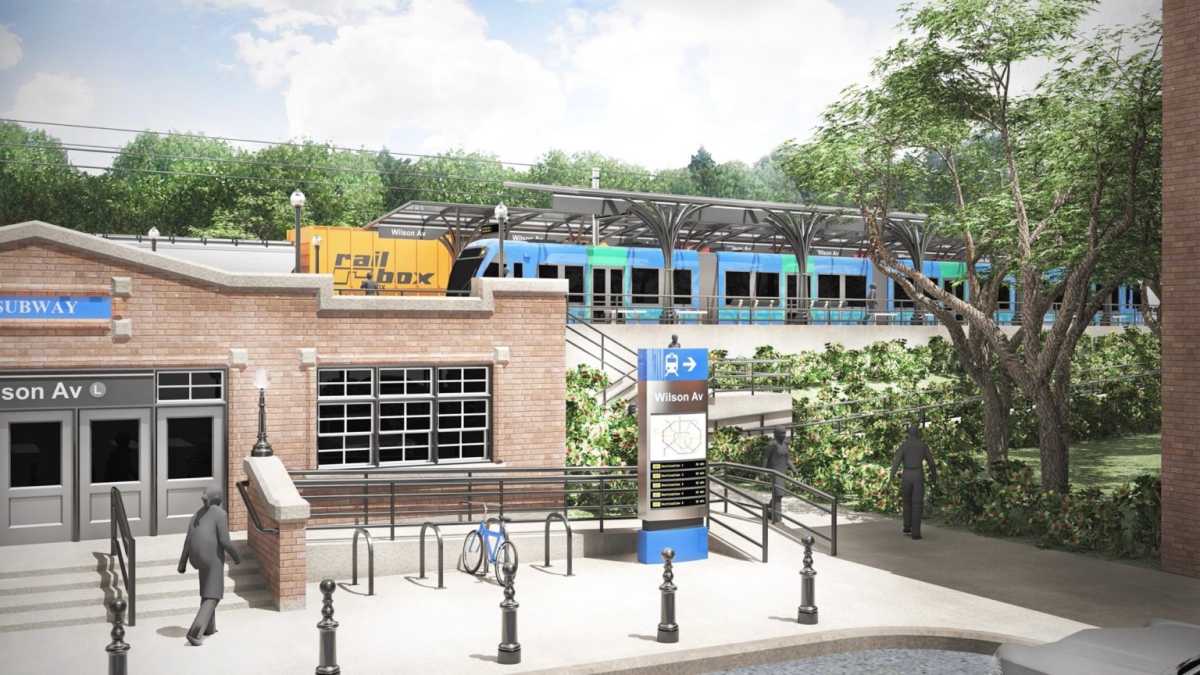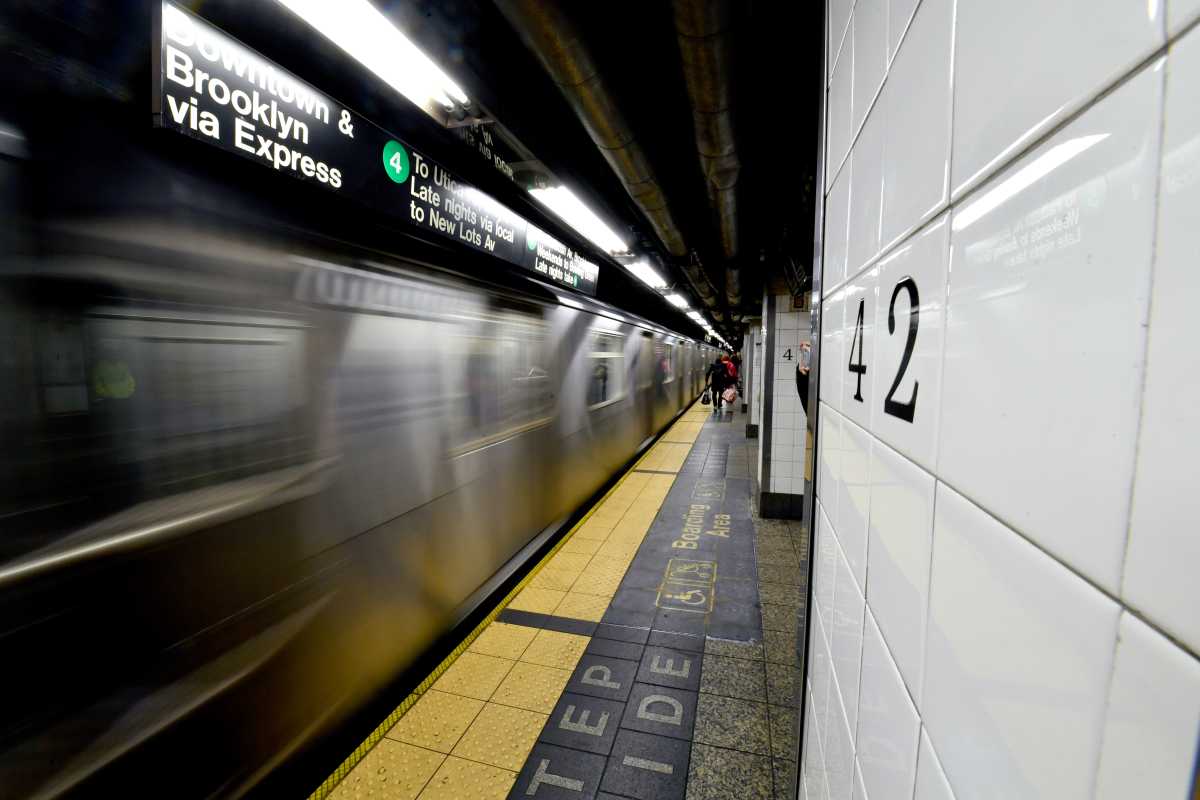The proposed Interborough Express (IBX) light rail between Brooklyn and Queens is inching forward, with officials hoping the project can be designed and engineering challenges resolved starting this year, Gov. Kathy Hochul announced on Tuesday.
The governor’s 2024 State of the State policy book, accompanying her big speech to a joint legislative session in Albany Tuesday, notes that the MTA will “initiate formal design and engineering” on the IBX, which aims to convert the underutilized Bay Ridge Branch rail spur, owned by the Long Island Rail Road and currently used by CSX freight rail, into a light rail line between Brooklyn and Queens, sharply reducing commute times between the two boroughs.
The line would run 14 miles between Bay Ridge and Jackson Heights, running through many neighborhoods with few transit options while also connecting to 17 other subway lines. The MTA estimates the line would see 120,000 daily riders by 2045, and cost $5.5 billion to construct.

“The [IBX] represents one of the most impactful infrastructure projects initiated by Gov. Hochul,” the policy book reads, “with the potential to substantially cut down on travel times, reduce congestion, and link nearly 900,000 residents in Brooklyn and Queens to more than 17 transit connections.”
Gov. Hochul announced she would pursue the IBX in her 2022 State of the State address, crystallizing a longtime dream by rail advocates. The proposal was based on a long-floating plan by the Regional Plan Association called the Triboro, which would extend the line further into the Bronx, but the Boogie-Down portion was cut due to conflicts with the MTA’s Penn Access project on the same existing tracks.
The governor in 2022 directed the MTA to commence an environmental review for the project, which she has since described as her “baby,” and in the following year’s State of the State, she said the project would move forward as light rail.
A conventional subway had been considered, but rejected as it would add a $3 billion premium to the project without many additional riders, the MTA contended.

As the MTA enters the next phase of the project, it will need to consider design and engineering challenges for repurposing an old railroad for light rail, a transit mode it has never constructed in New York City even as it became popular in other cities.
Matters under consideration include rail car designs, platform lengths, the number of tracks, and where transit honchos should build new interlockings, an MTA spokesperson said.
Designers must also contend with some of the Bay Ridge Branch’s key pinch points that constrict the project. One of the primary reasons that tanked the possibility of a subway was a short tunnel under All Faiths Cemetery in Queens, which is too narrow for subways to pass through and would require costly capital work to widen.
Unlike a subway, a light rail can travel at the street level, and the MTA plans to briefly divert the right-of-way onto Metropolitan Avenue and 69th Street in Middle Village for about 2/3 of a mile before returning to the pre-existing tracks. How the MTA would actually go about doing that is one of the key engineering problems they must get to the bottom of, even before worrying about potential lawsuits from local residents.


































